Reading Canine Body Language
| While dogs cannot speak, they do display their state of mind via their body language. By taking careful note of ear position, pupil dilation, facial tension (particularly around the muzzle and forehead), tail carriage and body weight distribution, an observer can detect whether a dog is relaxed or fearful, or acting in a submissive or dominant manner toward the observer. | |
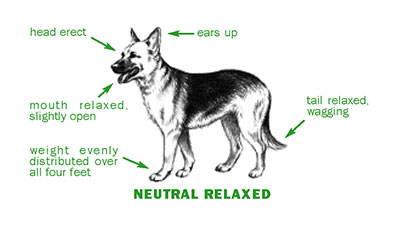 |
|
| Arousal
The dog has been stimulated by something in his environment. When the dog is excited by something pleasurable, the hackles will be down and the tail will be carried a little lower and will loosely wag. The muzzle will be relaxed and the tongue may be seen. This posture may be displayed to subordinates in order to express higher ranking pack position. |
|
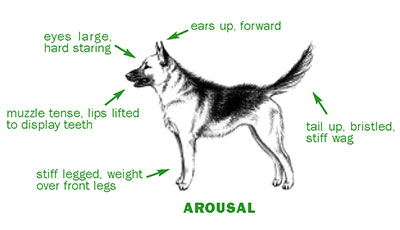 |
|
| Aggressive Attack
This threatening posture is used to chase another away or, if need be, to attack in order to protect possessions, pack or self. |
|
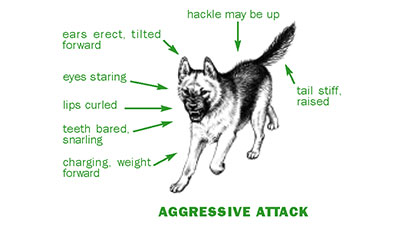 |
|
| Active Submission
This pacifying posture is used when a dog acknowledges another dog or human’s higher social ranking, or to inhibit another’s aggression. |
|
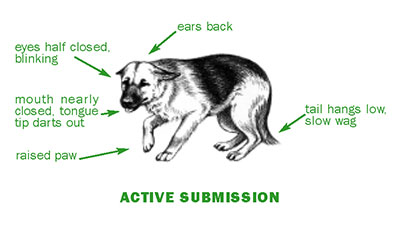 |
|
| Passive Submission
Bellying up indicates surrender, a pacifying gesture offered to a more dominant or aggressive individual. |
|
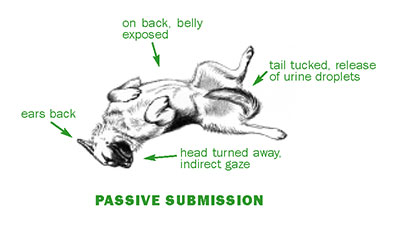 |
|
| Defensive Aggression
When fearful, a dog will give warning signals to indicate he does not wish to be approached. If, unheeded, he will bite to protect himself. |
|
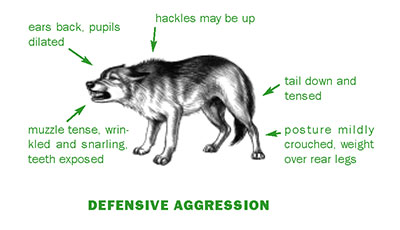 |
|
| Copyright © 2009. The American Society for the Prevention of Cruelty to Animals National Headquarters – 424 E. 92nd St. – New York, NY 10128-6804 – (212) 876-7700 – www.aspca.org Midwestern Regional – Office: 1717 South Philo Road, Suite 36 – Urbana, IL 61802 – (217) 337-5030 – www.napcc.aspca.org |




